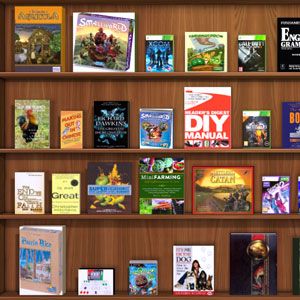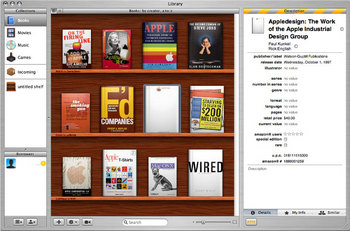

- #BOOKPEDIA VS DELICIOUS LIBRARY 3 SOFTWARE#
- #BOOKPEDIA VS DELICIOUS LIBRARY 3 WINDOWS 8#
- #BOOKPEDIA VS DELICIOUS LIBRARY 3 MAC#
- #BOOKPEDIA VS DELICIOUS LIBRARY 3 WINDOWS#
And there are some entities, like people, that may be attached to any media type, but in different roles. There are some fields specific to certain types of media. There are some fields that just about everything has in common, like title and "publication" year. It's a bit more expensive than DL but worth every penny.Ī bit harsher than I'd put it, but I tend to agree. Having said this, we do offer bundles to purchase more than one Pedia.
#BOOKPEDIA VS DELICIOUS LIBRARY 3 WINDOWS#
Makes adding all these windows into a single program complex and bloated.

One of the biggest hurdles for our competitors, and us prior to version 3, was that the add/edit view had fixed field types and locations. The same is true for separating the menu columns. For example, the Bookpedia column menu is already unwieldily with 98 possible fields, if it had all the fields for all the media it would start to become painful to use. It's technically easier to adapt the cover ratios and function options per medium. Although we are saving the majority of our users money with separate versions,the real reason is that each app does specific things with their media. Yet the number of users with multiple media is still low at just 30%. Luckily we have a high retention rate and many users come back to purchase a second app after using the first one for a while. Ribbon could be OK if commands were laid out logically, however it seems that someone at Microsoft had a lot of fun scrambling the commands across the ribbon so that things are not logical and intuitive.Ĭlick to expand.Most users are only interested in cataloging a single medium.
#BOOKPEDIA VS DELICIOUS LIBRARY 3 MAC#
On the Mac Office 2011 is much better because it has the traditional menu drop-down interface and the ribbon interface - the combination of the two is a more functional interface than ribbon alone in Office 2010. I have to look up where things are hidden all the time with that interface. Regarding Linux and Windows UI - I do not use Linux and therefore cannot comment - however look at the great ribbon interface disaster that Microsoft created on Windows.
#BOOKPEDIA VS DELICIOUS LIBRARY 3 SOFTWARE#
Regarding the AppleWorks database there was just so much that was right in the old ClarisWorks, ClarisImpact and AppleWorks -some of the best software I have used - it is too bad that Apple does not expand iWork and bring in some of the features from those earlier titles and HyperCard as well. Regarding Delicious Library selling like hotcakes do you know how many copies they have sold to date? In the end most people generally want to be able to use these systems without much of a learning curve and without much hassle.
#BOOKPEDIA VS DELICIOUS LIBRARY 3 WINDOWS 8#
Windows 8 may be changing some of this perception as well. I tried to point out that your assumption may not be correct. If Mac users were buying based on raw power/flexibility, Delicious Library wouldn't be a best seller. (One, for example, splits the built-in fields and the user-input fields into two completely separate panes which can't both be viewed at once.) If Linux or MSWindows users were buying based on interface, then the interfaces of that software would be better. And the stuff I found with the best database backends were unix/linux, but they all had horrible interfaces.

It also is "meh" on the underlying database (unless v3 has fixed this)-doesn't tie into as many data sources, doesn't allow customizing of fields, doesn't have easy grouping/searching, etc. It is almost certainly the best interface for a book catalog-and I've spent time systematically trying out everything out there, trying to find a replacement/upgrade for my ancient AppleWorks database (which has finally been obsoleted with OS X Lion). I didn't weigh in on the validity, only the perception.Īs an example, however: Delicious Library sells like hotcakes.


 0 kommentar(er)
0 kommentar(er)
